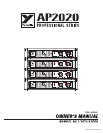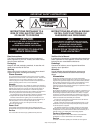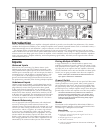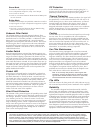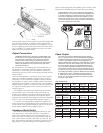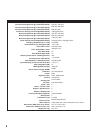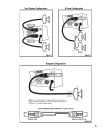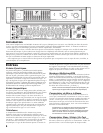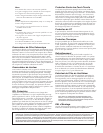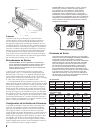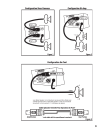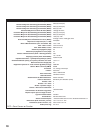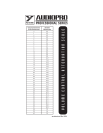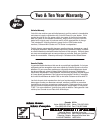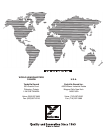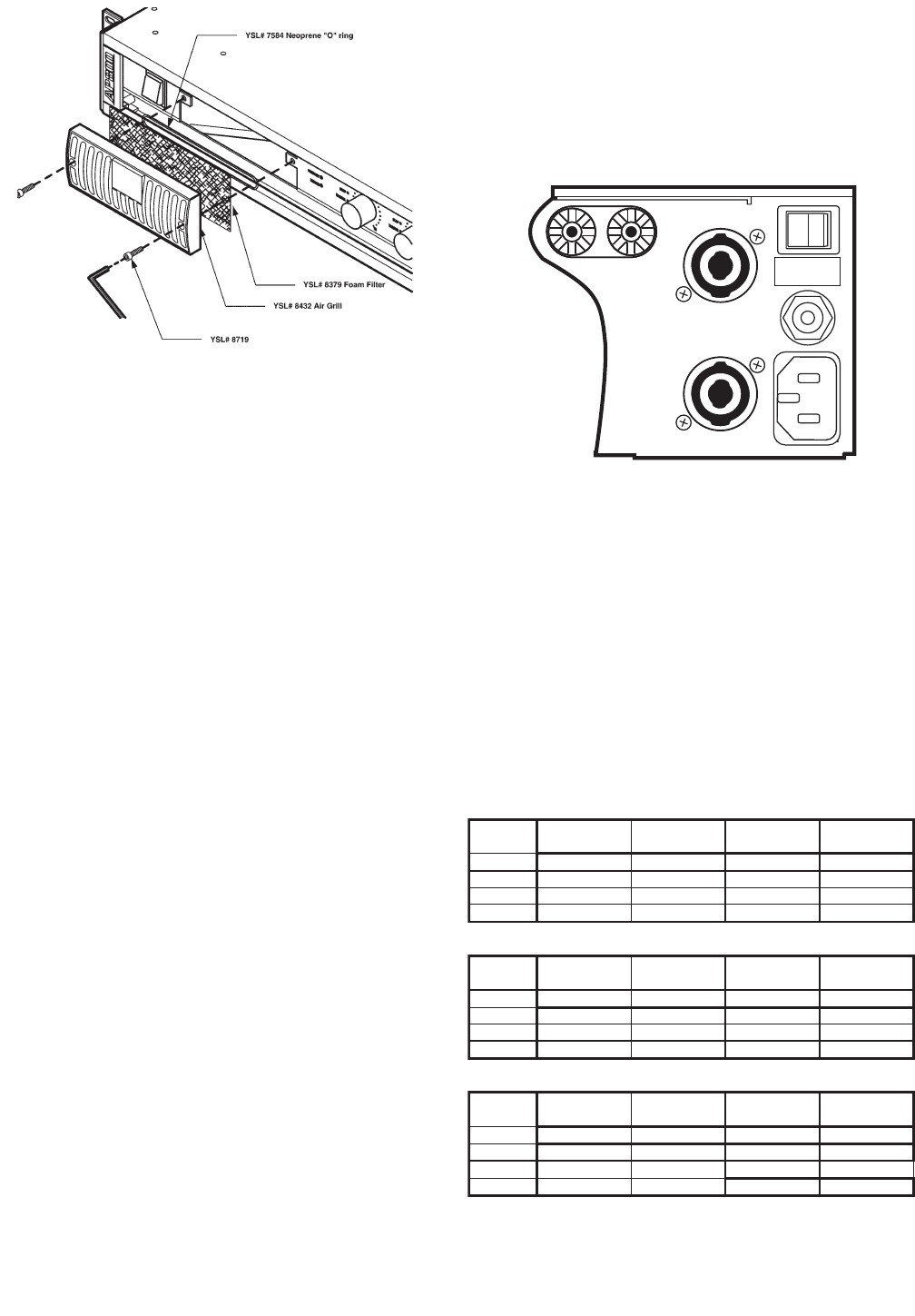
3
The AP2020 is not only suitable for use in both heavy duty
touring sound reinforcement systems but also when high head-
room and low distortion are needed to fully reproduce the
dynamic range and clarity of today’s CD recordings. It is built
to survive grueling road conditions and constant 2-ohm opera-
tion. Its reliability in a fixed installation running 4 or 8-ohm
studio monitors is without parallel.
Output Connections
WARNING: When driven to full power in Bridge Mode here
is more than 70 Vrms appearing between the binding posts.
This represents a significant shock hazard and due care
should be taken when making any speaker connections.
Ensure that no strands of bare conductor are exposed after
inserting the speaker wire into the hole in the side of the
binding post terminals.
The AP2020 has 5–way binding posts and Neutrik four con-
tact Speakon™ connectors for output speaker connections.
Connection to the binding posts can either be made with a
forked lug on the post’s neck or banana plug inserted into the
end of the post.
There are three Speakon™ connectors, one for each channel
output and a third for bridge/bi-amp connections. All three
connectors are connected to the amplifier’s outputs whether
the amplifier is in stereo mono or bridge modes. Connection
configurations are labeled on the back panel. Each Speakon™
output connector (output A, output B) is wired in parallel with
it’s respective binding posts for two channel two cable con-
nections (figure 1).
The Bridge/Bi–amp connector contains both channels on
one connector. This is convenient when connecting one
speaker to the amplifier in bridge mode where the speaker
is connected across the positives of each amplifier output.
Configure the mode switch for bridge and connect the speaker
to pins +1 and +2 of the bridge/bi-amp Speakon (figure 3).
To connect a bi-amp speaker, configure the amplifier for
stereo and connect to the bridge/bi-amp connector but use all
four terminals in the Speakon connector which will connect A
and B outputs separately to the speaker (figure 2).
Impedance Mode Switch
The AP2020 comes factory configured to deliver it’s maxi-
mum power into a 2-ohm load. However, it is possible to
switch your AP2020 to deliver it’s maximum power into 4-
ohms. The switch is located on the rear panel above the line
cord. 2-ohm mode is selected if the switch is in the LEFT posi-
tion, 4-ohm mode is selected if the switch if the switch is in the
right position. To prevent damage to the amplifier’s circuitry
ONLY switch modes when the amplifier’s power switch is OFF!
This feature is intended to be used where the load is known.
PLEASE NOTE: In the 4-ohm configuration, the minimum
load per channel is 4-ohms and the minimum BRIDGE load
is 8–ohms. Attempting to operate into 2-ohm loads while in
the 4-ohms configuration will cause the amplifier to go into
current limit, thermal limit, or both. The power specification
chart in this manual shows the powers that can be achieved
for various configurations and loads.
Power Output
All values are in WATTS. Measurements were made at
the 0.1% distortion point. Some CONTINUOUS AVERAGE
POWER measurements required line currents greater than
15 Amps. The amplifier under test was plugged into an
IDEAL POWER LINE consisting of a REGULATED 120 VAC
RMS 60 Hz pure sine wave. Ordinary AC “wall outlet” lines
will always exhibit varying and unpredictable amounts of
sag. To produce objectively verifiable and accurate specifi-
cations these unknown factors must be eliminated by using
an ideal AC line. When using an ordinary electrical outlet, it
will usually be possible to get 2400 Watts when the AP2020
is bridged into 4 ohms. The BURST measurements use
a 10mS burst at 1KHz with a 1/8 second pause between
bursts. The 1KHz burst represents the maximum possible
sine wave output power.
One Channel Driven
Load 1KHz 1KHz 1KHz 1KHz
(ohms) Cont. Avg. Burst Cont. Avg. Burst
2-ohm Mode 2-ohm Mode 4-ohm Mode 4-ohm Mode
2-ohm Mode 2-ohm Mode 4-ohm Mode 4-ohm Mode
2-ohm Mode 2-ohm Mode 4-ohm Mode 4-ohm Mode
8 330 350 425 475
4 550 650 725 870
2 850 1050 n/a n/a
Both Channels Driven
Load 1KHz 1KHz 1KHz 1KHz
(ohms) Cont. Avg. Burst Cont. Avg. Burst
8 250 350 400 450
4 460 650 615 800
2 650 1050 n/a n/a
Bridge Mode
Load 1KHz 1KHz 1KHz 1KHz
(ohms) Cont. Avg. Burst Cont. Avg. Burst
8 950 1200 1250 1600
4 1300 2100 n/a n/a
2 n/a n/a n/a n/a
MODE SWITCH
2-ohm4-ohm



